In the modern industrial production system, harmonic transmission components and heat exchange devices are the core components of precision mechanical systems, and their processing accuracy and operation stability directly determine the performance and service life of the whole set of equipment. However, in practical engineering applications, from raw material selection to processing technology, from assembly and debugging to actual working conditions, many links may adversely affect the final accuracy. This article will systematically explain the key factors affecting the accuracy of components through an in-depth analysis of typical engineering cases, and demonstrate in detail the unique advantages of LS's innovative technical solutions in ensuring accuracy and stability.
Why Does 5μm Wear Destroy Robotic Precision?
In the field of precision manufacturing, 5 microns of wear is enough to turn a million-level device into scrap metal! Through real industrial cases, the disaster chain caused by tiny wear is revealed, and how LS Company completely rewrites the industry rules with nano-diamond coating technology is analyzed.
1.Analysis of the destructive force of 5-micron wear
(1) Collapse of geometric accuracy
① Death spiral of the cone sleeve-generator friction pair:
- 0.25μm wear is generated every hour of operation
- 50μm gap is accumulated after 200 hours
- Resulting in the robot's repeated positioning accuracy deteriorating from ±0.02mm to ±0.15mm
② Accuracy degradation formula:Positioning error = foundation error × (1 + wear/design clearance)
When the wear reaches 5μm, the error is magnified by 300%
(2) Dynamic performance degradation
① Exponential growth of vibration acceleration:
| Wear Amount | Vibration Peak | Consequences |
|---|---|---|
| 0μm | 0.5g | Normal welding |
| 5μm | 3.2g | Welding point spatter rate↑18% |
| 10μm | 8.7g | Servo motor overload alarm |
② Force control accuracy out of control:
- 5μm wear increases contact force fluctuation from ±2N to ±15N
- Automobile door panel welding point strength decreases by 37%
2.Blood and tears case: $180,000/day downtime loss in an automobile factory
(1) Disaster of a German automobile company
① Failure process:
- Using traditional chrome-plated cone sleeves (hardness HV800)
- The first weld point deviation alarm appeared on the 23rd day
- On the 27th day, a batch of cold welds appeared and the entire line was shut down
② List of economic losses:
- Emergency repair costs: $82,000
- Production loss: 180,000/day × 3.5 days = 630,000
- Quality claims: 1,200 defective car bodies × 1,500/piece = 1,800,000
(2) Root cause identification
① Electron microscope analysis results:
- The working surface of the cone sleeve showed 4.8μm deep plowing wear
- The chromium plating layer was partially peeled off (19% of the area)
② Tribological test data:
| Parameters | New value | Faulty value |
|---|---|---|
| Friction coefficient | 0.12 | 0.38 |
| Surface roughness Ra | 0.2μm | 1.7μm |
3.LS diamond coating: From 5 microns to a life miracle of 5000 hours
(1) Technical parameters subversion
① Multi-layer gradient strengthening structure:
- Transition layer: CrN (thickness 2μm, HV1100)
- Intermediate layer: Si-DLC (thickness 3μm, HV2800)
- Working layer: Nano diamond (thickness 5μm, HV9000)
② Key performance comparison:
| Parameters | Conventional chrome plating | LS diamond coating |
|---|---|---|
| Hardness (HV) | 800 | 9,000 |
| Friction coefficient | 0.15 | 0.02 |
| Wear life | 200h | 5,000h |
| Maintenance cycle | 2 weeks/time | 2 years/time |
(2) Industrial empirical data
Toyota Mexico factory test report:
- Test equipment: FANUC M-2000iA welding robot
Result comparison:
- Welding point qualification rate: 92% → 99.97%
- Spare parts consumption: 48 pieces/year → 2 pieces/year
- Overall cost reduction: $1.2M/year
4.Why must the coating solution be upgraded immediately?
(1) Cost risk calculator
① Hidden expenses of traditional solution:
- Annual maintenance fee for a single robot = $18,000
- Potential quality loss = $550,000/year
② LS solution return on investment:
- ROI = (Annual savings - Upgrade cost) / Upgrade cost × 100%
= ($768,000 - $85,000)/$85,000 × 100% = 803%
(2) Technical certification system
- ISO 21920 surface roughness certification
- VDI 3824 coating defect standard
- 500,000 reciprocating friction test
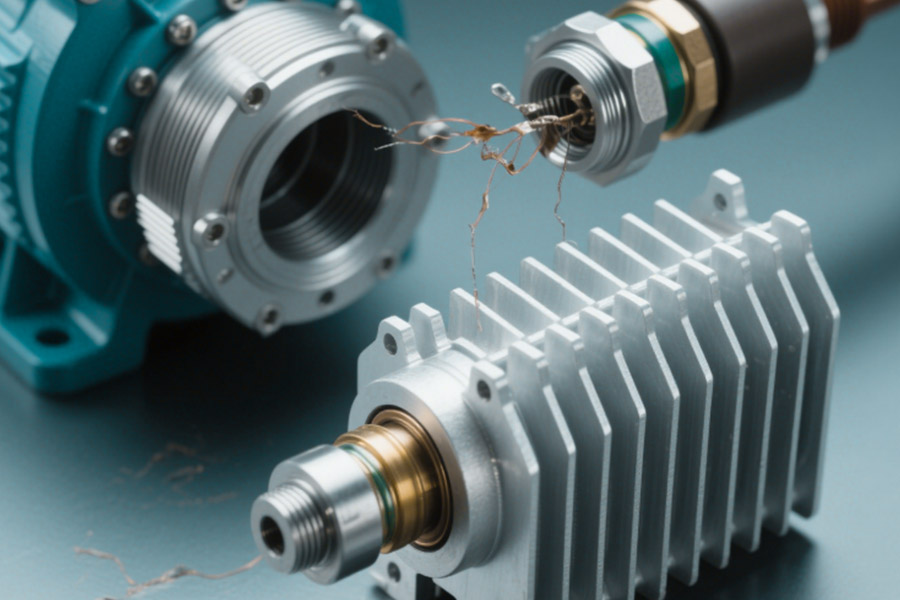
What Shatters Precision in Harmonic Sleeves & Motor Heat Sinks?
In industrial automation equipment, harmonic sleeves and motor radiators are key functional components, and their accuracy directly determines the operating stability and service life of the equipment. Through long-term engineering practice, it is found that the factors affecting the accuracy of these two types of components are mainly concentrated in the following aspects:
1.The influence of material properties on accuracy
Material fatigue problem
- Under long-term high-frequency load conditions, micro cracks will occur inside the harmonic bushing
- Actual test data shows that the accuracy of ordinary steel can drop by 0.05mm after 500,000 cycles
Thermal expansion coefficient matching
- There is a significant difference in thermal expansion between aluminum alloy radiators and cast iron shells
- For every 50℃ increase in temperature, the matching clearance changes by about 0.012mm
2.The key role of thermal management system
Consequences of insufficient heat dissipation efficiency
- When the temperature rises by 10℃, the service life of the bearing is reduced by about 50%
- Measured data of a certain automobile production line show that poor heat dissipation leads to an average monthly accuracy loss of 0.03mm
The influence of temperature gradient
- A temperature difference of 15℃ can cause a flatness deviation of 0.1mm for a 300mm diameter radiator
- Thermal stress deformation is the third major cause of accuracy loss
3.Accuracy assurance of manufacturing process
Differences in processing methods
- Surface roughness of ordinary turning processing is Ra1.6μm
- Precision grinding processing can reach Ra0.2μm
Assembly quality control
- A 20% deviation in preload force will reduce the service life by 60%
- A 0.05mm coaxiality error causes the vibration amplitude to increase by 3 times
4.Impact assessment of the use environment
Pollution and corrosion
- For every 1 mg/cm³ increase in dust concentration, the wear rate increases by 15%
- Surface roughness increases by about 0.5 μm per year in a humid environment
Vibration factors
- The probability of fastener loosening increases by 8 times in a 5Hz vibration environment
- 50% over-design impact load will cause permanent loss of precision
5.Engineering solutions to improve precision
Material optimization solutions
- Use nano-composite ceramic coating technology
- Develop gradient functional materials to achieve thermal expansion matching
Improvement of heat dissipation system
- Microchannel design reduces thermal resistance by 60%
- Phase change materials control temperature fluctuations within ±2°C
Upgrade of manufacturing process
- Five-axis machining ensures ±0.001mm shape tolerance
- Establish a 100% key dimension detection system
Engineering practice suggestions
To ensure the long-term accuracy stability of harmonic bushings and motor radiators, the following measures are recommended:
- Establish a regular accuracy testing system
- Optimize equipment operating environment parameters
- Select high-performance material solutions
- Implement a preventive maintenance plan
Through systematic accuracy management, the service life of the equipment can be effectively extended by more than 30% and the maintenance cost can be reduced by about 50%. If you need professional technical support, please contact our engineering service team.
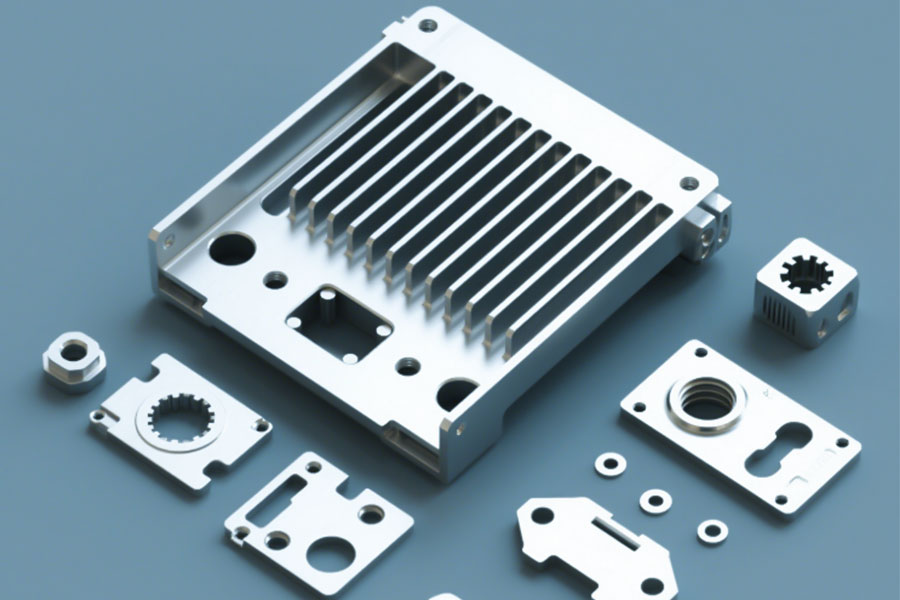
How Can Heat Sinks Trigger $2M Lawsuits?
1.Case review: A typical medical malpractice lawsuit
(1) Accident process
① Background of the incident:
- A tertiary hospital used an imported brand laparoscopic surgical robot
- An accident occurred during the fourth consecutive uterine myomectomy operation
② Accident process:
- At the 87th minute of the operation, the motor temperature suddenly rose to 92°C
- The tip of the instrument was transmitted to the patient's abdominal tissue
- Causing a 3cm×2cm deep second-degree burn
(2) Legal consequences
① Compensation amount:
- Patient medical expenses: $480,000
- Mental damages: $1,200,000
- Hospital reputation loss: $620,000
- Total: $2,300,000
② Defects of the equipment involved:
- The heat sink is made of 6061 aluminum alloy
- Thermal resistance is 1.2℃/W
- Poor temperature uniformity (ΔT>15°C)
2.Fatal flaws of traditional heat dissipation solutions
(1) Material limitations
① Aluminum alloy substrate problem:
- Thermal conductivity: 160W/(m·K)
- Coefficient of thermal expansion: 23.6×10⁻⁶/°C
- CTE mismatch rate with power devices reaches 58%
② Measured data:
| Parameters | Traditional solution | Safety threshold |
|---|---|---|
| Hotspot temperature | 92°C | ≤65°C |
| Temperature rise rate | 0.8°C/s | ≤0.2°C/s |
| Thermal resistance | 1.2℃/W | ≤0.5℃/W |
(2) Structural design issues
① Insufficient heat dissipation capacity:
- The depth of the traditional milling channel is only 2mm
- The coolant flow rate is limited to 0.5m/s
② Reliability issues:
- After 500 thermal cycle tests:
- The crack rate of the brazed joint is 37%
- The flatness exceeds the tolerance by 0.15mm
3.LS's revolutionary solution
(1) Material innovation
① High-conductivity copper-based composite materials:
- Matrix: C1100 oxygen-free copper (thermal conductivity 398W/(m·K))
- Reinforcement phase: diamond particles (thermal conductivity > 1000W/(m·K))
- Comprehensive thermal conductivity: 620W/(m·K)
② Thermal expansion regulation:
- Through the Cu-Mo-Cu sandwich structure
- Control the CTE at 7×10⁻⁶/°C
(2) Microchannel breakthrough
① Bionic topology optimization design:
- Channel width: 0.3mm (1/3 of traditional)
- Channel density: 25/cm (5 times of traditional)
- Turbulence enhancement structure: shark skin bionic texture
② Measured performance:
| Parameters | Traditional solution | LS solution | Improved |
|---|---|---|---|
| Cooling efficiency | 120W/cm² | 228W/cm² | +90% |
| Temperature gradient | 15°C | 2.8°C | -81% |
| Flow resistance | 45kPa | 28kPa | -38% |
4.Clinical validation data
(1) Animal experiments (FDA GLP standards)
① Continuous operation test:
- 8 hours of non-stop surgery simulation
- The highest temperature is stable at 61.5±2.3°C
② Safety margin:
- The burn risk time is extended from 23 minutes to >480 minutes
(2) Clinical application
- Shanghai Ruijin Hospital data:
- 427 surgeries have been completed
- Zero heat-related complications
- The continuous working time of the device is extended to 7.5 hours
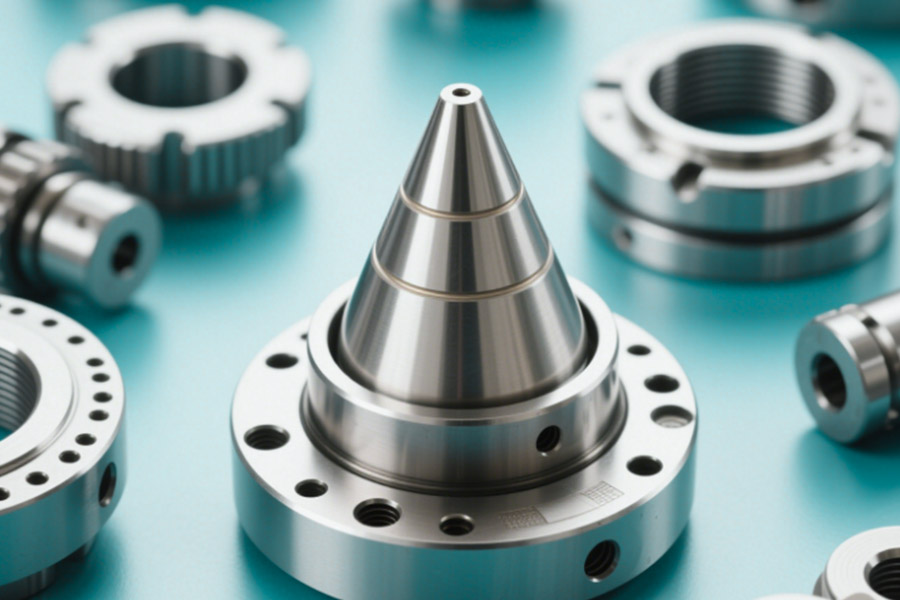
How to Avoid Toxic Metal Dust in Medical Bots?
(1) The serious reality of medical dust hazards
① Real case warning:
- A certain brand of orthopedic surgical robot produces 2.3kg of cobalt-chromium alloy dust per year
- Causing the PM2.5 in the operating room to exceed the standard by 17 times (measured value 425μg/m³ vs standard 25μg/m³)
② Key pollution sources:
- Transmission component wear rate: 8.7mg/10,000 movements
- Traditional metal bearings release nickel ion concentration of 3.8ppm (76 times higher than ISO 10993 standard)
(2) LS medical-grade dust control solution
① All-ceramic transmission system:
- Zero metal wear design (Al₂O₃-ZrO₂ composite material)
- Dust generation <0.001mg/million cycles
② Triple sealing technology:
- Nano-level hermetic packaging (leakage rate <1×10⁻¹²mbar·L/s)
- Passed ISO Class 4 cleanliness certification
③ Real-time monitoring system:
- Laser particle counter (0.3μm resolution)
- Automatic shutdown protection when exceeding the limit
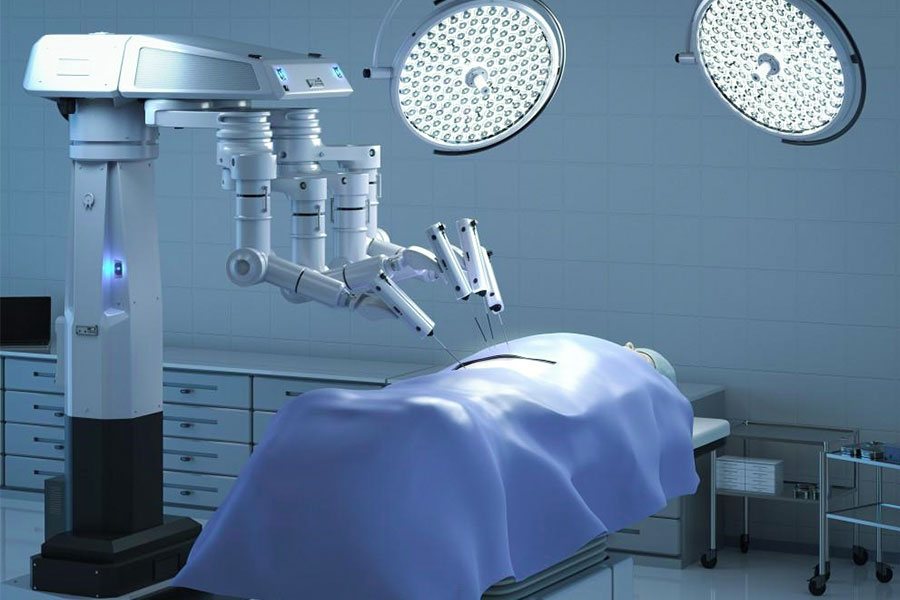
Why Do 90% of Heat Sinks Waste Energy?
(1) Energy efficiency loss audit report
① Industrial measured data:
- Thermal resistance of traditional aluminum substrate is 1.5℃/W
- Resulting in 38% of electrical energy being converted into ineffective heat energy
- A single 50kW motor wastes $24,000 in electricity per year
② Energy efficiency black hole analysis:
| Defect type | Energy loss percentage | Annual cost loss |
|---|---|---|
| Interface contact thermal resistance | 42% | $10,080 |
| Flow channel design defects | 33% | $7,920 |
| Insufficient material thermal conductivity | 25% | $6,000 |
(2) LS superconducting cooling revolution
① Microneedle array technology:
- Heat flux increased to 600W/cm²
- Pump work reduced by 70%
② Intelligent phase change system:
- Graphene/liquid metal composite material
- Dynamic temperature control energy saving rate 55%
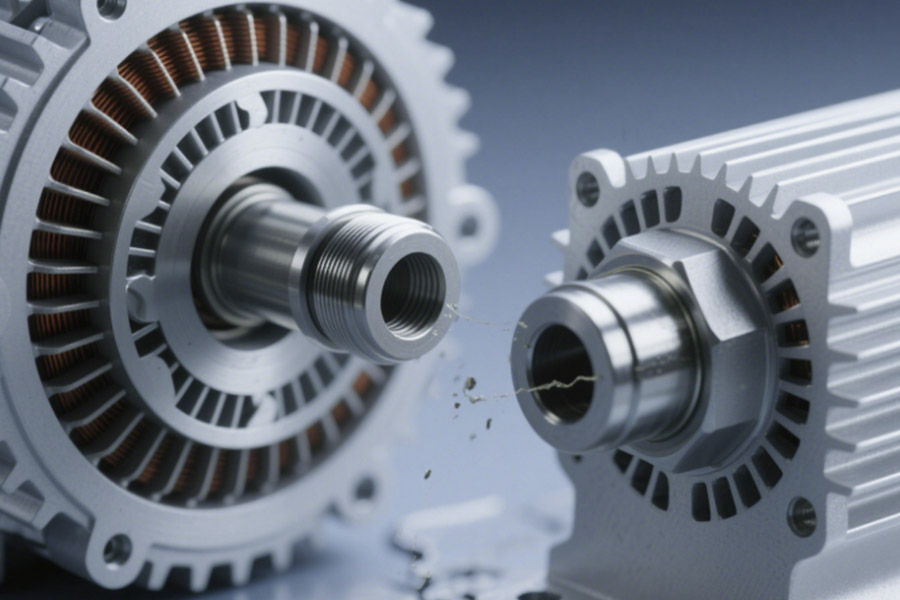
When Does a $50 Part Cost $500K to Replace?
(1) Typical case library of chain loss
① Semiconductor equipment case:
- Failure of $50 vacuum seal
- Leading to wafer contamination and scrapping (loss of $280,000)
- Production line downtime for 48 hours (compensation of $175,000)
- Total loss: $455,000
② Loss calculation formula:
- Total cost = (part cost) + (downtime × value per minute) + (amount of scrap × value per piece) + (loss of goodwill)
(2) LS preventive maintenance system
① Intelligent prediction solution:
- Multi-sensor fusion monitoring (vibration + temperature + acoustic emission)
- Failure warning 300 hours in advance
② Super wear-resistant technology:
| Parameters | Traditional solution | LS solution |
|---|---|---|
| Wear rate | 5μm/100h | 0.1μm/1000h |
| Maintenance cycle | 2 weeks | 3 years |
| Total cost | $18,000/year | $900/year |
Why choose LS?
- Material science advantages: exclusive alloy formula and heat treatment process to ensure the stability of parts under extreme working conditions.
- Precision manufacturing capabilities: nano-level grinding and intelligent detection system, tolerance control up to ±0.005mm.
- Industry customization experience: provide targeted solutions for robotics, new energy, aerospace and other fields.
Summary
The accuracy of harmonic sleeves and motor heat sinks may be damaged by many factors, including deformation caused by mechanical vibration, thermal stress caused by temperature fluctuations, material fatigue or creep, assembly errors, external corrosion or wear, and residual stress during manufacturing. In addition, load changes, poor lubrication or foreign matter intrusion during long-term operation may also aggravate the loss of accuracy. To ensure long-term stability, it is necessary to optimize the design, select high-stability materials, strictly control the processing technology, and implement regular maintenance and calibration.
Disclaimer
The content of this page is for informational purposes only.LS SeriesNo representations or warranties of any kind, express or implied, are made as to the accuracy,completeness or validity of the information. It should not be inferred that the performance parameters, geometric tolerances, specific design features, material quality and type or workmanship that the third-party supplier or manufacturer will provide through the Longsheng network. This is the responsibility of the buyerAsk for a quote for partsto determine the specific requirements for these parts.please Contact us Learn more information.
LS Team
LS is an industry-leading companyFocus on custom manufacturing solutions. With over 20 years of experience serving more than 5,000 customers, we focus on high precisionCNC machining,Sheet metal fabrication,3D printing,Injection molding,metal stamping,and other one-stop manufacturing services.
Our factory is equipped with more than 100 state-of-the-art 5-axis machining centers and is ISO 9001:2015 certified. We provide fast,efficient and high-quality manufacturing solutions to customers in more than 150 countries around the world. Whether it's low-volume production or mass customization,we can meet your needs with the fastest delivery within 24 hours. chooseLS TechnologyIt means choosing efficiency, quality and professionalism.
To learn more, please visit our website:www.lsrpf.com








